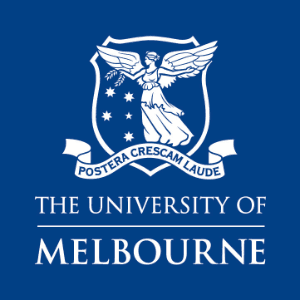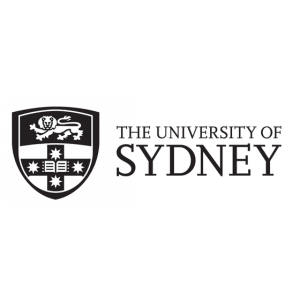Explore By
 Exams
Exams
 Countries
Countries
 Expenses
Expenses
 Universities
Universities
Australia makes a great exotic study-abroad destination for international students. Officially known as the Commonwealth of Australia, the oceans surround the country. Along with beautiful beaches, the country has high academic standards of education administrated by the Australian Qualifications Framework (AQF).
For a country with just 40 universities, two international universities, and one private specialty university, the Australian government puts in a lot of effort. It takes a particular interest in the higher education sector, which has made Australia a country with high academic standards and qualifications recognized worldwide.
30% of Australians are born overseas, making it one of the most culturally diverse nations with a large population of international students. Students from several countries come to Australia to seek quality higher education. During your course, you will get the opportunity to network with individuals from different nations.
Cities like Melbourne and Sydney come in the top 10 cities worldwide for higher education by QS World Ranking. Because of all these factors, Australia is the third most preferred destination for international students.
The admission process differs from university to university, but the following documents remain/general requirements remain staple for admission to higher education in Australia.
Proof of English proficiency (TOEFL/IELTS)
GMAT/GRE for postgraduate programs
Letters of recommendation
Statement of purpose
Academic transcripts
Copy of a valid passport
Australia is home to just 43 universities - 40 universities, two international universities, and one private specialty university; even with fewer universities, it attracts over 700,000 international students yearly. According to QS World University Rankings 2022, eight of the 100 top universities are from Australia.
Australia is home to The Group of Eight (G08) universities. These are research-intensive universities, and a large proportion of their research rates as ‘world-standard.’

University of Melbourne
Parkville, Victoria.
Know More

The University of Sydney
Camperdown, New South Wales
Know More

University of New South Wales
Kensington, New South Wales.
Know More
The Australian education system offers students to pursue various programs such as Higher Education, VET, Schools, English Language programs, and non-awarding courses. Australian programs are Australian Qualification (AQF) recognized. Established in 1995, AQF is a national policy for regulated qualifications in Australian education, research, and training.
Finance for Studying in Australia
Level of Education | Average Cost Per Year (in AUD) |
Undergraduate Degree | AUD 20,000 - 45,000 |
Graduate Degree | AUD 22,000 - 50,000 |
Doctoral Degree | AUD 18,000 - 42,000 |
Living Expense
One of the significant benefits of studying in Australia is that one gets to enjoy a high standard of living, which does not come with a high price tag. The quality of education, transportation, healthcare, infrastructure, and more are amongst the best a country could offer.
Expenses | Average Cost |
Rent | AUD 750 |
Food and Groceries | AUD 250 |
Transportation | AUD 100 |
Entertainment | AUD 200 |
Recent Blogs

Updated on Nov 02 ,2023

Updated on Aug 14 ,2023

Updated on Apr 07 ,2023
The Australian government spends approximately 200 million dollars yearly, offering international students scholarships, fellowships, grants, and bursaries.
Government-funded Scholarships for international students
Australian Awards Scholarships (AAS)
Destination Australia Awards
Research Training Program
Other Scholarships for international students
International Water Centre Scholarships for International Students
The Northcote Graduate Scholarship
Fulbright Program
Apart from the scholarships mentioned above, various university-specific scholarships are available for international students.
Recent Blogs

Updated on Jan 22 ,2024

Updated on Dec 25 ,2023

Updated on Nov 21 ,2023
When studying abroad, the cost of living is a primary consideration. The monthly cost of living in Australia is around AUD 20,000 per month; this cost is besides the tuition fees.
A small caveat when choosing Australia as one's study abroad destination is that Australian Universities provide little to no housing options for international students. However, some universities offer on-campus accommodation. We recommend contacting your institution to find out what accommodation options they can offer.
On-campus accommodation
University-managed accommodation: These accommodations and facilities are operated and maintained by the university for the exclusive use of students. The accommodations are usually fully furnished, and other costs such as electricity and water bills are included in the rent. Students wanting on-campus housing should apply well in advance.
Cost: AUD 100 to AUD 700.
Off-campus Accommodation
Homestay: Considered one of the safest types of accommodation, where students will be leaving with Australian families right in their home.
Valuable cultural experience
A fully furnished room
Properly arranged meals
AUD 250 to AUD 350 per week
Private Rentals: Type of accommodation not connected to the university. Many students in Australia choose to share the cost of a rental property with several housemates.
Offers a lot more independence than other accommodations.
Will help students to become self-sufficient and responsible
Students would have to look after household chores like cleaning, groceries, paying bills etc.
AUD 100 to AUD 500 per week (shared)
Procedure
International students seeking higher studies admission to Australia must apply for a subclass 500 visa. A subclass 500 visa will let students stay in Australia for the duration of their study program (usually five years).
Australia has a high employment rate due to the low density of its population; hence it provides a range of working options. International students can work while completing their studies and supplement some of the attendance costs of the university.
Part-time Work Opportunity
A subclass 500 visa will make international students eligible to work in any sector. However, students must also hold an Overseas Student Health Cover (OSHC). Students pursuing an undergraduate degree can work up to 40 hours per fortnight during term time. If students are pursuing a master's or doctorate, they are allowed to work unlimited hours, as long as they meet their coursework requirements.
Full-time Work Opportunity/Post-study Work Opportunity
With its world-class education ecosystem, top-class universities, robust economy, and high standard of living, Australia has quickly emerged as a go-to study abroad destination and to settle down for international students.
Recent Blogs

Updated on Apr 25 ,2024

Updated on Nov 06 ,2023

Updated on Sep 12 ,2023
In Australia, international students get the option of working part-time. At the same time, they study in Australia, thus getting hands-on work experience so that students can connect to professional networks and work after completing their studies. Many people who have a degree from Australia seek employment in areas that resonate with their degree. The most common fields are education, science, business, healthcare, engineering, and law.
Even with the high living standards, the cost of living in Australia is considerably lower than other options like the USA or UK. Tuition fees at Australian universities vary substantially depending on where to study, what you study, and the level you will be studying at.
List of some affordable universities in Australia
University of Wollongong
University of New England
University of Victoria
The Government of Australia spends 200 million dollars annually to provide scholarships, fellowships, grants, and bursaries to international students, and various university-specific scholarships are available for international students.
Because Australia allows international students to work on their student visa (subclass 500), every student should try to seek this golden opportunity and kick-start their careers in Australia itself.
If your end goal is to settle in Australia, then it's better to pursue programs that are in demand in Australia.
Computer Science and Information Technology
Agriculture, Environmental and Related Studies
Management and Commerce
Health
Food, Hospitality, and Personal Services
Related Blogs

Updated on Jan 18 ,2024

Updated on Nov 10 ,2023

Updated on Sep 07 ,2023
TOEFL
English language proficiency test
PTE
The computer-based English test
SAT
Standardized test administered by College Board
GRE
Admission test for graduates
GMAT
Test for Business and Management Programs
Confused which university to choose?
Use our recommendation engine to analyze your profile and recommend the most desirable programs that fit you.
Get Recommendation